Tires are one of the most important parts to prioritize. Staying safe + alive in a fast moving vehicle that carries a lot of mass is priority #1. Good tires in good condition that are appropriate for your area will always be one of the key components that will help keep you safe and out of trouble. Getting into fender benders that could’ve been prevented with good tires isn’t fun emotionally and financially either: the cost of good tires will often be dwarfed by repair costs and loss of personal time/energy.
We may forget to check our tires (myself included) until some slipping or sliding unexpectedly occurs and suddenly it becomes a priority real fast. Tire depth, air pressure and age are some of the things we should be routinely aware of on a frequent basis.
This DIY covers tire tread depth specifically. Here’s a picture of my tire model with the tread channels circled in red:
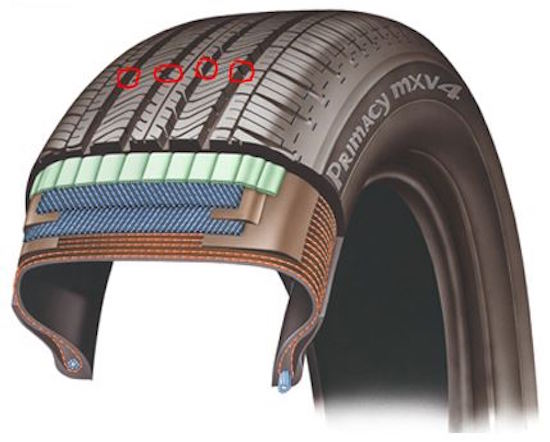
Tire tread is what provides grip and traction when the roads are wet or icy. There are lots of tread designs from different makes and models that channel water + snow away from the tires’ contact surface with varying efficiency. Tread depth is what determines the amount it can channel away. If you have worn tires it can’t channel much, they become less effective and you can’t stop as quickly as before resulting in longer distances for your car to come to a halt.
Tread depth is measured from the top of the tire’s rubber surface to the deepest groove in the tread channel. It’s usually measured in 32nds of an inch with new tire tread depths ranging from 10/32” to 11/32”.
I’ll start with my tires’ tread depth as an example:
- New tire spec = 10/32”
- My front passenger side tire = 7/32”
- Legal limit = 2/32”
My front passenger tire has about 63% of tread depth life remaining (highlighted in yellow):
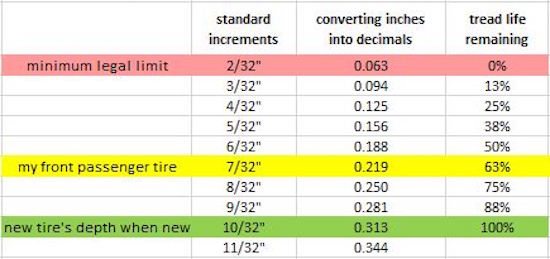
Ready to measure your tire’s tread depth?
Here are a few options to measure each of your tire’s tread depth:
1. If you are close to a tire shop you can always swing by and see if they can check your tires’ tread depth. They usually can do this for free so call ahead and confirm before you make the trip. I decided to buy an inexpensive digital tread depth gauge that’s very similar to my local tire shop’s tool but theirs reads in 32nds of an inch versus mine reads as a decimal in inches:
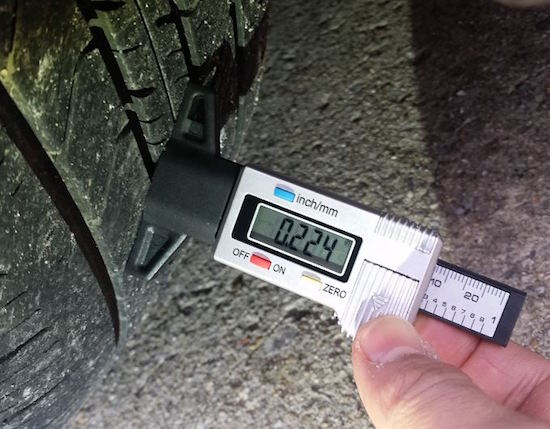
2. Look to see if your tire has treadwear indicators (raised sections spaced throughout the bottom of the tread channels) and get a rough approximation to how close it is to the minimum legal limit. If it’s showing as part of the tire’s contact surface then it’s time to replace them as they are designed to be at 2/32”. You can see my tire’s tread indicators circled in red:
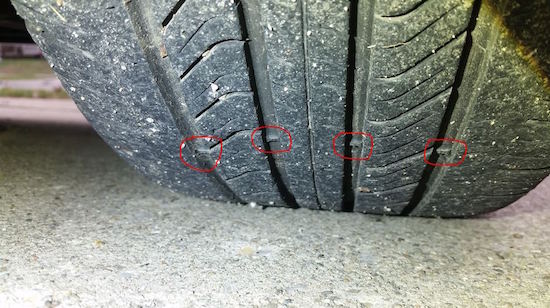
3. You can use a penny coin and get a rough approximation of how close you are to the minimum legal limit. If Lincoln’s hair at the top is starting to show then you could be somewhere around 4/32”:
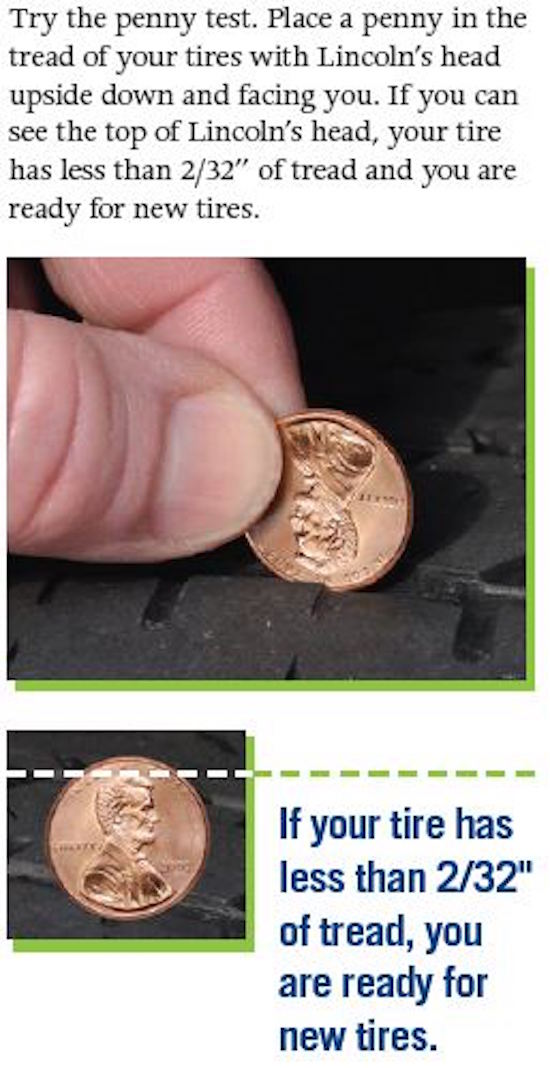
A few tips to consider:
- Be careful driving your car in wet + snowy conditions as your tread depths approach 50% remaining tread life. It usually won’t perform as well as new. I consider replacing all 4 tires anywhere between 25-50% as the minimum legal limit hardly gives me much confidence to drive in anything but dry pavement conditions.
- Take multiple measurements if you can throughout the tire’s tread channel avoiding the areas with the raised tread indicators. This will give you a more accurate determination of that tire’s tread depth.
- Measure each tire’s tread depth separately as each corner is important to keeping your car in control.
- If one is significantly less than the others and it’s close to the minimum legal limit you could consider replacing just that tire with the same model if the others are close to being new. Otherwise I would look to replace the entire set as all 4 tires should ideally be as identical as possible with each other to ensure balanced performance.
- If a pair in the front or rear is less than the other pair but well above the minimum legal limit then you may need to rotate your tires per your car’s manufacturer instructions. See your owners manual for that or consult a tire shop if you’re not sure.
- Check to see if your tire warranty is still valid from either the manufacturer or the tire shop who may have installed your tires. I use a tire shop that can apply a pro-rated credit toward the purchase of a new set of tires based on my current tires’ remaining usable tread life. This helped me one year to offset the expense when there was a defect found in an old set of tires.











